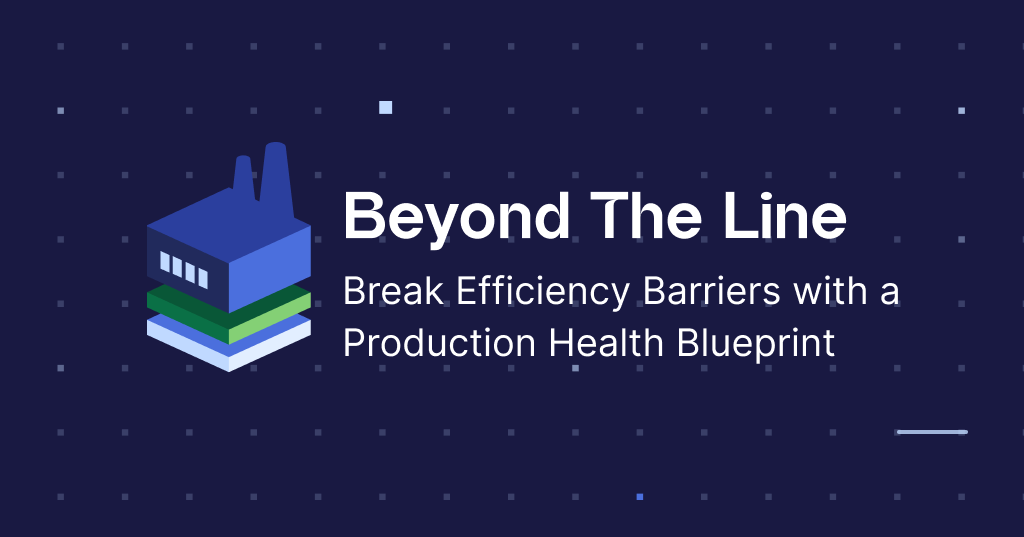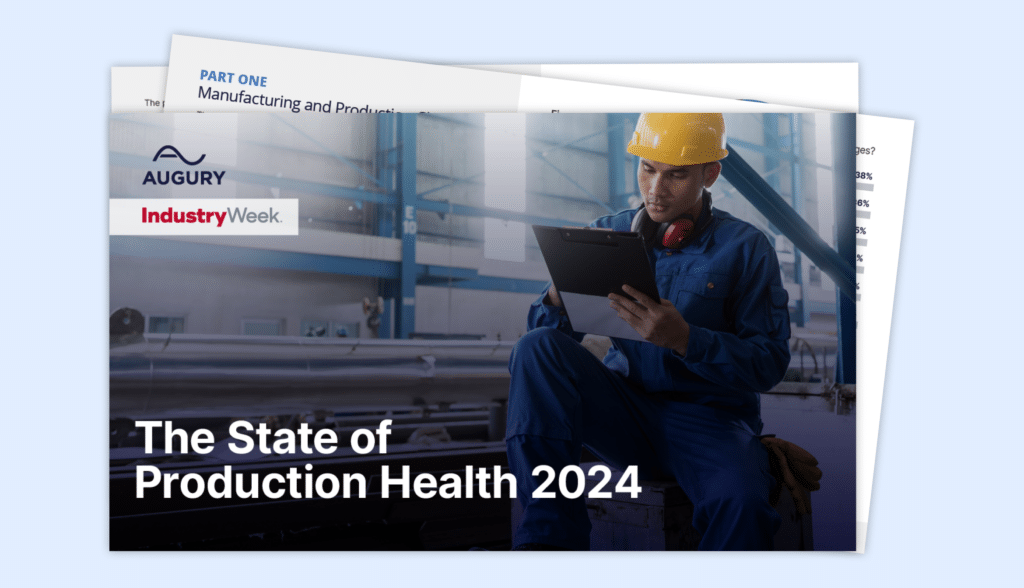
As a lead-up to Augury’s Beyond The Line event on June 18th, 2024, Augury Co-Founder and CEO Saar Yoskovitz presents a three-part series on how new technologies are aligned to help manufacturing meet its many different and often conflicting goals. After summarizing the ongoing challenges in part one, Saar now presents the macro-trends opening up new possibilities – to make old promises a reality.
Innovation Can Be A Waiting Game
There’s a saying attributed to Bill Gates: “Most people overestimate what they can achieve in a year and underestimate what they can achieve in ten years.” That truism also applies to changes in our technologies and practices: we generally overestimate how quickly and effectively new technologies and trends will impact us in the short term while underestimating their long-term transformational impact.
For instance, the 1939 World’s Fair predicted flying cars and robot helpers for our homes, and in the 1950s, Dick Tracy comics showed off his two-way wrist radio. All those things have come true to varying degrees – albeit decades after the most optimistic prognostications. In fact, it was only in 2023, the FAA approved the first flying car prototype.
What keeps those things from coming true faster oftentimes isn’t the core idea or invention; it’s the supporting technologies and conditions needed to make them practical. Making small radios was not a problem in the 1950s, but small, powerful batteries were. And while the basic requirements of a flying car were already known for decades, we lacked the compact engines, GPS software, and robotics needed to reduce the risk brought on by non-expert operators.
Read part 1 of this series:
‘Beyond The Line (1): The Manufacturer’s Nightmare’.
Enabling Tech Is Now Catching Up
For decades, manufacturing has had real-time data-driven predictions and insights, as well as automation – innovations that could transform our machines and our relationships with these machines. However, the practical application of that idea has lagged well behind the predictions of how soon this would all play out. The reason, again, was the lack of supporting technologies and conditions.
However, the developments have been rapid, and the supporting tech is now available to open the door to a massive change in manufacturing. We can now look forward to huge gains in productivity, quality, sustainability, and efficiency. So, what’s changed that allows us to finally turn a decades-long promise into a reality?
Ready for the next era of efficiency?

Five Macro Trends Driving The New Era Of Manufacturing
1) Cheap Processing Power – And Lots Of It
You need massive processing power close to where the work is being done to get the near-real-time insights that can lead to fast, effective responses to process deviations, reliability risks, or quality escapes. Processing power has made those leaps, and today, cheap ubiquitous processing at the edge of our computing networks – and therefore at the center of our manufacturing processes – is now a reality.
2) Trustworthy Data – And Lots Of It
Manufacturing environments have become increasingly chatty over the years. Many assets already come with some level of sensing and data collection capability. For others, it’s more about choosing from an increasing array of third-party sensing solutions, which are often tied to specific use cases (quality, reliability, compliance).
Either way, or in combination, the overall result is that manufacturers now have vast quantities of data about their processes, assets, and operations. However, to apply all this data you need evolved AI capable of applying powerful analytics… Which leads us to:
3) A Massive Leap In AI Effectiveness
While Generative AI systems are getting all the news today, more purpose-built, AI-driven solutions have impacted parts of manufacturing for several years now in areas such as reliability and maintenance.
What’s made these more purpose-built solutions successful is oftentimes they are end-to-end solutions that solve the entire problem, from data collection to analysis and insight. More general-purpose uses of AI, however, have been less successful. But today, the constraints that have limited AI effectiveness – namely, lack of sufficient processing power where it’s needed and lack of sufficient trustworthy data to train AI models – are falling away.
The result is that layers of AI-driven solutions, some more purpose-built around quality, reliability, and efficiency, and some more generative and interactive built on platforms such as OpenAI, can be effective in terms of their ability to be trusted copilots or ‘assistants’ to more complex manufacturing problems (such as end-to-end process improvement).
4) Greater Connectivity Between Systems
Data is great to have, but data trapped in silos is just an added storage cost. Happily, these siloes are starting to break down thanks to Increased connectivity between manufacturing systems, increased use of cloud infrastructure, and emerging sets of APIs to enable manufacturing systems.
The ability of these systems to “talk” to each other is key to powering the emerging AI-enabled decision-making tools and enabling real-time, autonomous optimization of everything from spare parts management to the manufacturing processes themselves.
5) A Workforce Eager To Embrace New Technologies.
New tools and technologies are only as good as the rate at which they are adopted and fully utilized. Fortunately, the workforce entering manufacturing today will not only adopt these tools but demand them.
These digital natives will be fully comfortable with AI-assisted decision-making and high levels of autonomy in the tools they use. They will accelerate the rate of adoption and the resulting transformation of a wide range of manufacturing processes.
Companies used to capital investment cycles that span decades will have to learn to iterate at the speed of new technology, evolving their strategies and execution in months and quarters, not years and decades.
Right Place, Right Time
These macro trends around workforce and technology are intersecting just when it’s needed most. As many of the past strategies for increasing manufacturing efficiency become worn out, the new strategies and tactics enabled by AI, data, interconnectivity, and edge computing will step into the breach and spur another wave of productivity in manufacturing – one that’s efficient, sustainable, and more responsive to customer demand.
But gaining the benefits of these trends doesn’t come without some effort. Manufacturers must develop clear strategies for their technology ‘stack’, ensuring they lay the foundation to grow, iterate, and scale. This will require different thinking on their part. Companies used to capital investment cycles that span decades will have to learn to iterate at the speed of new technology, evolving their strategies and execution in months and quarters, not years and decades.
They’ll also need a clear blueprint of what they must build for themselves and what they should expect from their technology partners.
Now For The Real Work
Aspiring manufacturing leaders will also need to think of strategies that consider the insights from a strong insight-first strategy as crucial assets on the same level as pumps, rollers, or ovens. They’ll also need a clear blueprint of what they must build for themselves and what they should expect from their technology partners. So please tune in next time as we explore how to best do this on a practical level…
Read Part 1 of Beyond The Line: ‘The Manufacturer’s Nightmare’
Read Part 3 of Beyond The Line: ‘Bringing The Manufacturer’s Dream To Life‘
Ready for the next era of efficiency?







